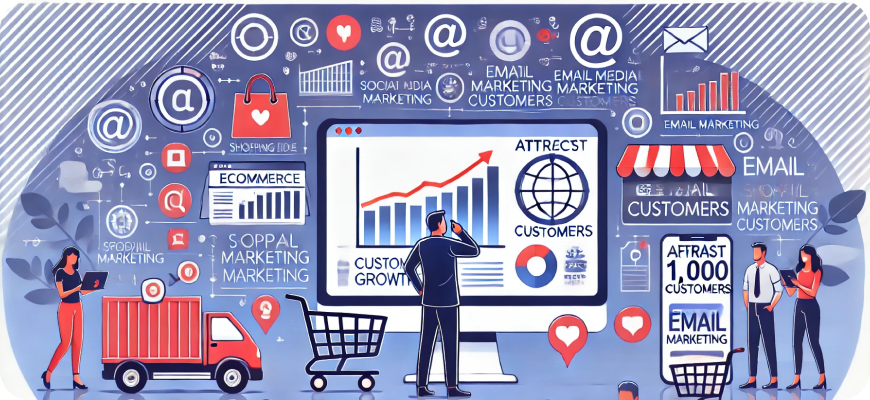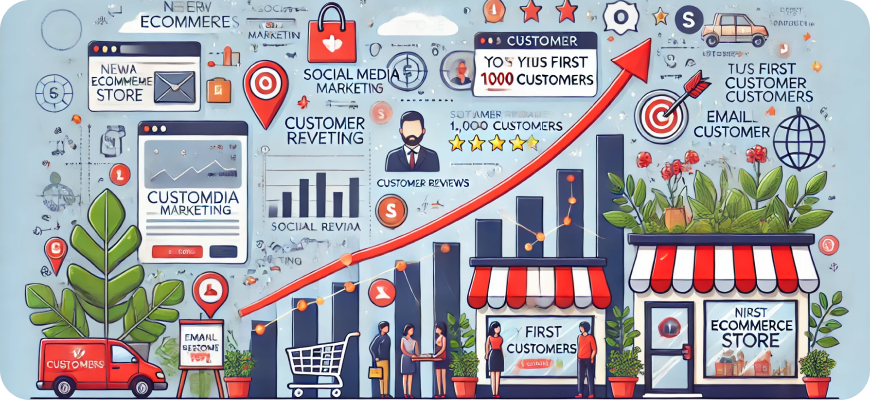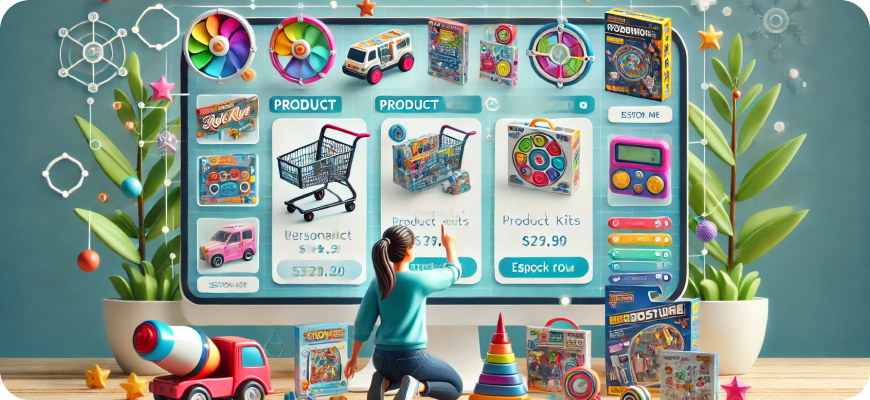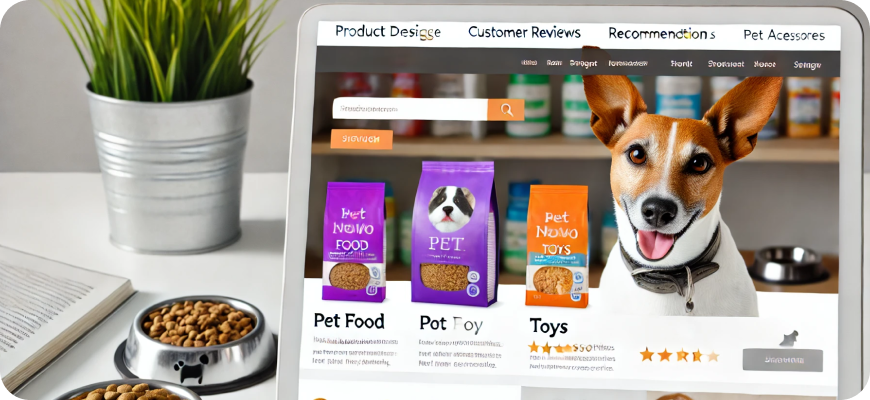How to Get Your First 1,000 Ecommerce Customers
Launching an ecommerce business is a challenging yet rewarding venture. While getting your first 1,000 customers may seem like a daunting milestone, it’s achievable with the right mix of strategy, persistence, and customer-focused practices. This article provides a step-by-step guide on how to attract, convert, and retain your first 1,000 customers through proven marketing tactics, relationship building, and brand positioning.

1. Understand and Define Your Target Audience
Before you can successfully attract customers, you need to clearly understand who your ideal customers are.
- Create Buyer Personas: Develop detailed profiles of your ideal customers, considering factors such as age, gender, interests, pain points, purchasing behavior, and preferred online platforms.
- Conduct Market Research: Use tools like Google Trends, industry reports, and social media analytics to understand what your target customers are searching for, what problems they’re trying to solve, and which products they need.
- Analyze Competitors: Take note of your competitors’ strategies and identify areas where you can differentiate your brand.
2. Build a User-Friendly and Optimized Website
Your website is often the first point of interaction between your brand and potential customers. To make a great first impression, ensure your site is optimized for user experience.
- Easy Navigation: Simplify the user journey by organizing your site with clear menus, intuitive layouts, and a fast-loading interface.
- Mobile Optimization: A large percentage of online shoppers use mobile devices. Make sure your website is fully responsive and user-friendly on all devices.
- Compelling Product Pages: Provide high-quality images, detailed descriptions, reviews, and videos to showcase the value of your products.
- Streamlined Checkout Process: Reduce friction in the checkout process by offering guest checkout options, multiple payment methods, and minimal form fields.
3. Leverage Content Marketing
Content marketing helps you attract, educate, and engage potential customers while building trust and brand awareness.
- Start a Blog: Write content that addresses your target audience’s questions, solves their problems, or entertains them. This will drive organic traffic to your site, improve SEO, and position you as an industry authority.
- Create Videos: Videos, including tutorials, behind-the-scenes looks, and customer testimonials, are highly engaging and can boost conversion rates.
- Offer Gated Content: Provide free resources, such as eBooks, guides, or templates, in exchange for visitors’ email addresses, building your email list and nurturing potential leads.
4. Utilize Social Media Marketing
Social media platforms are powerful tools for reaching your target audience, building relationships, and driving traffic to your ecommerce store.
- Choose the Right Platforms: Focus on platforms where your audience spends the most time. For example, fashion brands often succeed on Instagram, while tech products may perform well on YouTube.
- Create Shareable Content: Post a mix of engaging content, such as product photos, user-generated content, memes, and industry news.
- Engage with Your Audience: Respond to comments, answer messages promptly, and actively participate in conversations related to your niche.
- Run Contests and Giveaways: Encourage users to share your content, tag friends, or use a specific hashtag for a chance to win. This can rapidly increase brand awareness.
- Collaborate with Influencers: Partnering with influencers in your niche can expose your brand to a larger audience and generate credibility through trusted recommendations.
5. Invest in Paid Advertising
Paid ads are a fast way to drive traffic and reach your first customers.
- Google Ads: Target customers actively searching for products like yours through search and shopping campaigns.
- Facebook and Instagram Ads: Use precise targeting options to reach customers based on demographics, interests, and behaviors.
- Retargeting Ads: Show ads to people who visited your website but didn’t make a purchase, reminding them to complete their order.
6. Focus on Search Engine Optimization (SEO)
SEO is a long-term strategy that can drive consistent organic traffic to your ecommerce store.
- Keyword Research: Identify relevant keywords for your products and content, then incorporate them into your product pages, blog posts, and metadata.
- Optimize Product Listings: Write compelling product titles, descriptions, and tags that include relevant keywords while emphasizing the benefits and unique features of your products.
- Build Backlinks: Work on acquiring high-quality backlinks through guest posts, partnerships, and media mentions.
7. Use Email Marketing to Engage and Convert Customers
Email marketing is one of the most effective ways to turn leads into loyal customers.
- Welcome Series: Send new subscribers a series of welcome emails introducing your brand, showcasing your best products, and offering a special discount for first-time purchases.
- Abandoned Cart Emails: Remind visitors of items left in their carts, often with a small incentive like free shipping or a discount.
- Personalized Promotions: Use customer data to send personalized recommendations, special offers, and promotions.
- Newsletters: Keep subscribers informed about new products, sales, and relevant content.
8. Offer Irresistible Promotions and Discounts
Promotions can motivate hesitant shoppers to make their first purchase.
- First Purchase Discount: Offer a special discount to new customers to encourage them to buy.
- Limited-Time Offers: Create urgency by offering time-limited deals and flash sales.
- Free Shipping: Studies show that free shipping is a major motivator for online shoppers.
- Bundles and Upsells: Increase order value by bundling complementary products together at a discounted price or offering upgrades.
9. Implement Referral and Loyalty Programs
Word-of-mouth marketing and repeat customers are vital for growth.
- Referral Programs: Encourage customers to refer friends by offering rewards, such as discounts or free products, for each referral.
- Loyalty Programs: Reward repeat customers with points, discounts, or exclusive perks for future purchases.
10. Build Trust with Social Proof
Customers are more likely to buy from a brand they trust.
- Collect Reviews and Testimonials: Positive reviews and testimonials build credibility and trust. Encourage customers to leave reviews after a purchase.
- Showcase User-Generated Content: Repost customer photos and stories to demonstrate real-life use cases of your products.
- Highlight Trust Badges and Certifications: Display badges like “Secure Checkout” or “Money-Back Guarantee” to reassure customers.
11. Provide Excellent Customer Service
Customer service plays a major role in customer retention and word-of-mouth marketing.
- Live Chat Support: Offer instant answers to customer questions via live chat.
- Responsive Communication: Be prompt and helpful in responding to customer inquiries via email, social media, and other channels.
- Proactive Support: Follow up with customers after their purchase to ensure they are satisfied with their experience.
12. Create a Seamless Customer Experience
A seamless experience keeps customers coming back.
- Simple Checkout Process: Minimize the steps to complete a purchase and offer multiple payment options.
- Fast Shipping and Easy Returns: Fast delivery and hassle-free returns can be strong selling points for your store.
- Consistent Branding: Ensure your brand message, tone, and visuals are consistent across all touchpoints.
13. Analyze and Optimize Your Marketing Efforts
Continuous improvement is key to scaling your ecommerce business.
- Use Analytics Tools: Track key metrics such as website traffic, conversion rate, bounce rate, and customer lifetime value.
- A/B Testing: Test different elements of your website, ads, and email campaigns to see what works best.
- Customer Feedback: Regularly gather and analyze feedback from customers to identify pain points and areas for improvement.
Real-World Examples of Successful Customer Acquisition Strategies
- Warby Parker: The eyeglass retailer leveraged a unique home try-on program, allowing customers to try glasses at home for free. This innovative approach helped build trust and encouraged conversions.
- Dollar Shave Club: The company’s humorous and engaging video ad went viral, generating massive brand awareness and acquiring thousands of new customers in a short period.
- Glossier: Glossier focused on building a community around its brand, using social media to engage directly with customers and encourage user-generated content.

Conclusion
Getting your first 1,000 ecommerce customers is a significant milestone, but with the right strategies, it’s achievable. By understanding your audience, optimizing your website, leveraging content marketing, engaging on social media, and using a mix of organic and paid tactics, you can attract and convert your first customers. Remember to continuously engage, nurture, and listen to your customers, turning initial transactions into long-term relationships that drive the success of your business.






